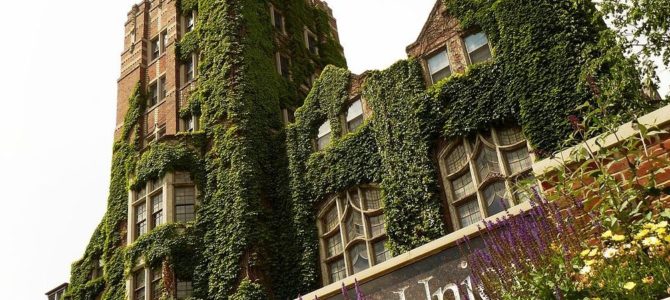
Anna Wibbelman thinks wood paneling is sexist. And racist. And all-around bad. That’s why she wants it torn out of the Student Union Building at the University of Michigan.
According to a report in The College Fix, Wibbelman told a student-government meeting this spring that “minority students felt marginalized by [the] quiet, imposing masculine paneling” of the old union building. The former head of “Building a Better Michigan,” a college organization for improving student life, she wants the paneling removed during a proposed $85 million renovation of the historic landmark on the Michigan campus.
Not that she has anything against wood, exactly. But the history of wood is a history of oppression. Rich, white, privileged classes had wood paneling. Poor, minority, excluded classes had to make do with painted walls. Now, Wibbelman thinks, the sheer existence of wood makes students feel the weight of their old marginalization.
Contacted for comment by The College Fix, the Michigan student attempted to tone down her description by calling it “an off-hand comment.” Along the way, however, she made things worse by saying she was really objecting to “how many students felt marginalized by the quiet nature of the building when they entered.”
This Chick Isn’t Alone
Wibbelman is not alone in hearing oppression in quietness. There is a whole genre of op-eds and web essays noting the racism hidden in the demand for silence in libraries. Quietness, they explain, is a privilege owned by the elites, so minorities hear silence as a proclamation of white Europeans’ social superiority. The poor typically do not have quiet spaces, so when they encounter a demand for quiet, they feel a rejection of their culture.
Even Wibbelman’s description of the Michigan wood paneling as “imposing” has a background in modern leftism. The “legacy of imposing, racist, colonial monuments,” according to African Identity in Post-Apartheid Public Architecture, has resulted in modern minorities who feel “a widespread aesthetic aversion to strong iconic expressions, propagated by monumental mass.” To say the union building is “quiet” and “imposing” almost makes calling it “masculine” a redundancy. Its sheer existence is an affront. Generations of men had wood paneling, so today it speaks to Wibbelman about masculine dominance.
All of this is crazy, of course. It is a desire to be offended, searching desperately for something to be offended by. When Wibbelman latched on to wood paneling as an example of at least a microaggression against minorities, she was roundly mocked in publication after publication. Her little tirade against wood, however, reveals something more—something wrong down at the root of nearly all the recent attempts to find oppression in the remnants of the past.
Anna Wibbelman Is Precisely Backwards
Pictures show the wood and other design elements in Michigan Union Building are handsome enough. No more than that, though. (And if the students really wanted something to be offended by, they might start with the tacky neon chair upholstery that seems to be a staple of American college furniture.)
The 1917 building seems to have been built in a little bit of Ivy-League envy, but the brown mahogany style is classic for a reason. It gives a vibe of New England, with an unspoken claim about the seriousness of education and the pursuits to which students are called.
The university describes the union building as “one of the University of Michigan’s most recognizable landmarks,” and if that is racist, sexist, and oppressive, then so is the entire existence of the University of Michigan—and maybe the existence of any college in America today. Civilizational progress is, in many ways, a making available to lower classes what once was available only to the elite. The changes of the modern age are always good when they take a wealthy man’s possession, like comfortable furniture, and allow the poor to have their own version of it.
In other words, the goal of civilization should not be to eliminate goods, but to make those goods available to the largest number. If participation in politics is a good, then democracy is a desirable form of government because it expands participation in politics. If ownership of life-easing technologies is good, then capitalism is a desirable form of economics because it expands the possibilities of ownership.
And if higher education is good, then our colleges have a duty to expand the student body to the largest number capable of benefiting from higher education. Or even from wood paneling. The quiet imposing spaces of educational architecture intend to give a feeling of the seriousness and weight of education. To eliminate them would not be to rid ourselves of old oppressions. It would be to rid ourselves of the reasons we wanted education in the first place.









